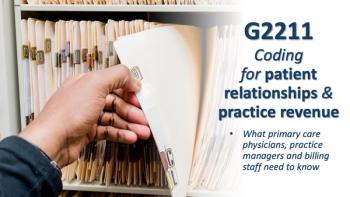
Patient Experience is Not about Patient Happiness
Those who say the definition of patient experience is solely to make the patients happy are wrong. It’s about fulfilling their unmet needs.
In our increasingly complicated healthcare environment, it’s easy to understand the angst that many docs are feeling.
Physicians today are pressured to see more patients and boost relative value units by performing more procedures to make up for declining reimbursements. They are expected to understand and function under time-consuming regulatory burdens, integrate an EHR system into their practices, and must adapt to the increased use of quality metrics designed to improve not only the safety and quality of healthcare, but also the experience of it.
Of these considerations, the need to focus on and improve the patient experience, in particular, is a major source of anxiety for physicians. It’s not because they think it is unimportant, but rather, because they equate the patient experience with patient happiness. The misperception that their performance is being measured by how happy they make their patients is the icing on an already arduous and complicated healthcare cake. Many are left thinking, what is the point? In fact, patient experience metrics are not a gauge of patient happiness. Rather, they are a holistic assessment of how well patients’ needs for safe, quality, and compassionate care are being met.
Healthcare leaders bear some responsibility for this lingering anxiety and they must proactively eradicate it. Administrators and clinical leaders must make the case that the patient experience is not just about patient happiness. It involves something much more important, which is at the core of what we do: Delivering clinical care that reduces patient suffering.
We cannot allow the definition of patient experience to be hijacked by those who seek to degrade the importance of this topic by saying it’s “all about making patients happy.” Improving the patient experience is really about how we fulfill the unmet needs of every patient. It’s how we deliver on the promise of safe, high-quality care, in an environment of patient-centeredness. That is our collective goal as healthcare providers, and it is what patients’ demand of us when using the healthcare system.
Focusing on the patient experience is not only good business. It is good medicine. A growing body of literature has demonstrated a robust connection between patient experience scores and clinical outcomes. In a recent
Using a variety of data sources, including the American College of Surgeons National Surgical Quality Improvement Program (NSQIP), the UCLA researchers found that centers with higher patient experience scores actually saw improved surgical outcomes. Mortality, complications, and a reduction in failure-to-rescue rates were all more favorable in hospitals that performed better in patient experience. What makes the UCLA study particularly compelling was the use of the NSQIP database, considered by many to be one of the gold standards for surgical outcomes measurement.
The association between patient experience and improved outcomes comes into even sharper focus when additional considerations, such as caregiver engagement, are added to the mix. Evidence indicates that hospitals with high engagement scores perform better on patient experience metrics. If we consider that high engagement is a surrogate for a healthy organizational culture, it is not difficult to understand the relationship between patient experience and the safety and quality considerations that contribute to a strong organizational culture.
When healthcare employees are engaged in their work and focused on keeping the patient at the center of all that they do, they perform better. Additionally, when caregivers feel like they are part of a cohesive team, they make fewer mistakes and pay greater attention to detail. When effective communication, both with patients and with other members of the care team, is a priority, serious safety errors are reduced, patient treatment compliance is increased, and care becomes better coordinated to meet patients’ needs. Ultimately, patients are happier, but that is a byproduct of the improvements across the entire patient experience. It is not the singular objective.
To reach this point, the onus is on all of us to recognize that the patient experience cannot be treated as a separate silo defined primarily as improving service to make patients happy. Service training and a focus on a service environment is only a small piece of the patient experience puzzle, and becomes window dressing on our efforts to improve care delivery. Physicians and others must recognize and understand that improving the patient experience is about improving the delivery of what we do, which is to provide safe, effective and compassionate healthcare.
If we fail the patient on any element of the patient experience - safety, quality or service - we will not achieve our goal of meeting patient needs and reducing their suffering. Understanding and defining the interdependency of safety, quality, and patient-centeredness as the primary elements of the patient experience will help physicians embrace this important work and improve the care we deliver.
Newsletter
Optimize your practice with the Physicians Practice newsletter, offering management pearls, leadership tips, and business strategies tailored for practice administrators and physicians of any specialty.








